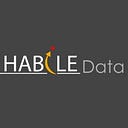Do Companies Still Use Manual Data Entry Process?
Power of human intelligence to correctly discern appropriate and inappropriate still makes most businesses favor manual data entry approach.
Data entry looks like a simple operational activity that involves capturing requisite data from a source and inputting it into a database table. However, as complexities surface, you start understanding how important it is to leverage the most correct data entry approach.
Though factors like speed, volume and productivity pose critical challenges in manual data entry; it is considered as the most secured approach to ensure data accuracy while dealing with sensible data. Human judgment once again surpasses machine intelligence. With many positive sides, manual data entry still meets customized requirements of businesses across verticals and streamlines their operations. The day is still far away, when manual data entry would be completely extinct.
What are the advantages of manual data entry process?
Following are some benefits cum advantages of manual data entry that falsify the commonly held claim that manual data entry processes have become outdated.
Ease of implementation
Businesses find it easy to implement manual data entry, and the reason is simple — requirement of minimal resources. Even with handful of operators and systems, you can begin recording data, and progressively scale the setup. Especially, small and medium enterprises (SMEs) find the approach quite useful, since they cannot afford automated data capture.
Multi-stage validation and verification
You have flexibility to interpose checks in data entry lifecycle to prevent errors, and data leakage and tampering. As your data entry procedures mature, you can identify such crucial interfaces.
Ensured accuracy in capturing human-sensible data
Machines may fail to correctly interpret certain data elements, capturing them under incorrect headings or even classifying them as errors. Operator-led data entry overcomes this limitation and is the best way to handle sensitivities in the data.
Transitional flexibility
Businesses’ demands change and their operational requirements; and during the transitional periods, managing change is the most vital aspect. When it comes to data entry, an operator-led approach proves excellent in migrating or maintaining data for new programs.
Excellent supervision
Huge data volumes don’t need only good storage functionalities, but also great oversight, which can be accomplished effectively through human data entry expertise.
Customized post-processing
You can develop context-based routines for overcoming duplicate records and create standards for serializing and properly formatting data. Similarly spell-check mechanisms can allow you maintain 100% accuracy.
Do you still need manual data entry?
While automated data entry supersedes manual data entry, eventually, the data captured through the former approach must be subjected to manual scanning for validating data accuracy and reliability. So, manual data entry cannot be replaced with automation overnight, rather it must be a long process of transition from manual to hybrid (semi-automated) to completely automated data entry.
Instead of letting the dilemma on whether to continue with manual data entry or implementing automation, you should combine manual and automated approaches that harness the power of automation and human intelligence. This means you must focus on augmenting operator-led data entry with technology.
Cost-benefit analysis to arrive at the best option
While manual data entry may seem like a cheaper option, your context will decide the cost-efficiency of the application a data entry approach. Analyzing multiple what-ifs can allow you understand it the cost of hiring data entry operators exceeds that of procuring automation tools. However, cost aspects shouldn’t encourage you accommodate data-quality tradeoffs.
Data entry a backbone of strong data governance
Interfaces and operational procedures that allow the entry of data into your backend database systems are always crucial to having a strong data governance model. When you lack measures to track and monitor the flow of data, you literally fail to check entry of bad data into your system. In this context, manual data entry specialists create the groundwork for bringing into data management environment standards for building quality databases.
Role of manual data entry in enhancing Artificial Intelligence (AI)
Machine learning applications have become common across industries, and they require human intervention in steps like labelling for supervised algorithms to function efficiently. Computer vision also requires human-led image annotation for correctly training AI models.
Conclusion
Never go straight to the conclusion that automation will optimize and increase the efficiency of your data entry. First evaluate your business workflows, try to fit a suitable approach to them and then make an informed decision on which workflows to keep manual and which to automate.
As manual data entry mechanisms come with their own advantages, they play an important role in shaping Data Analytics and Business Intelligence (BI) initiatives.
Having robust data entry teams can allow you to streamline information digitization and strengthening your data warehouses. In case you do not have a good in-house team, collaborate with a third party data entry outsourcing company to unleash the power of manual data entry.
